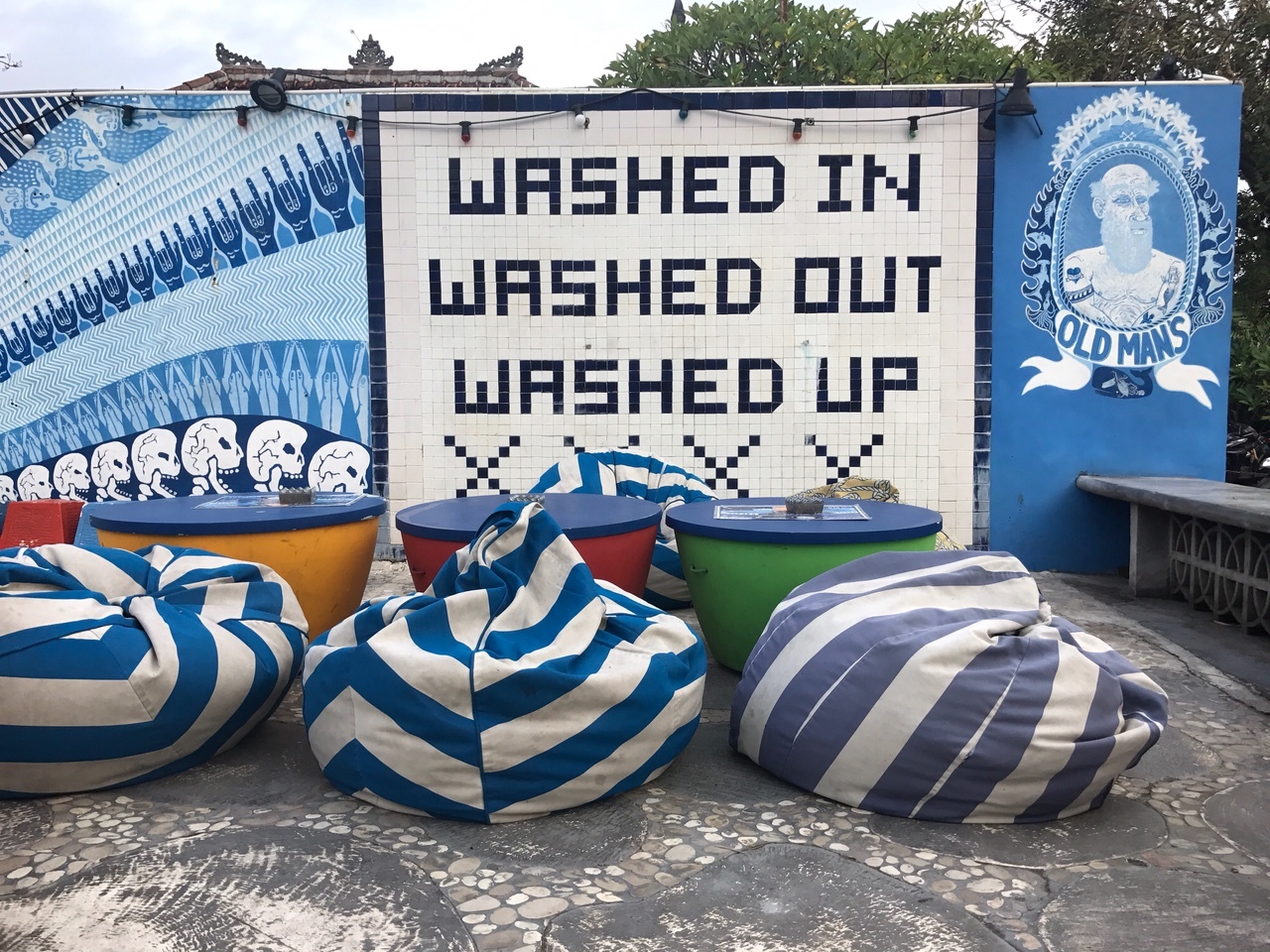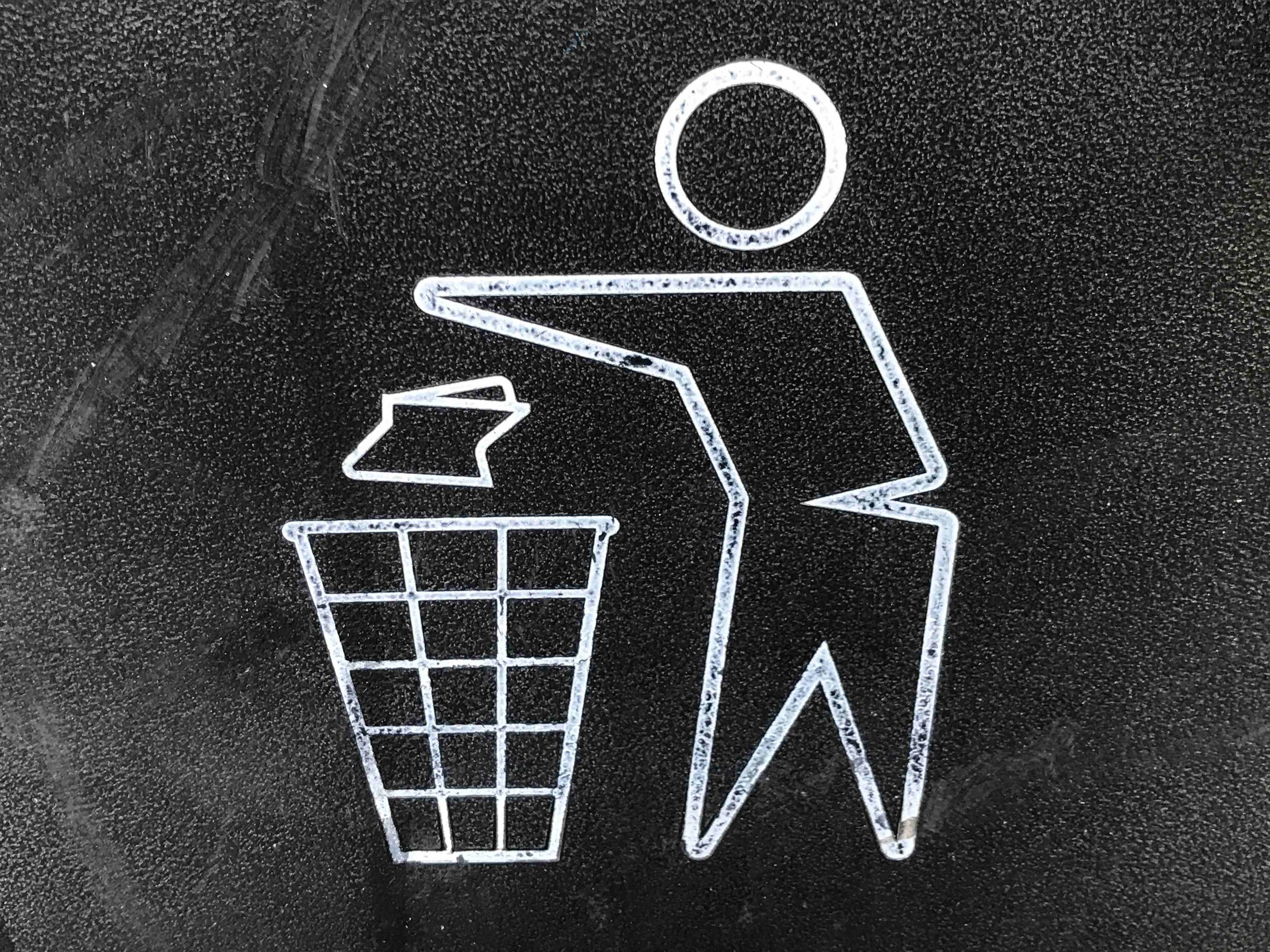Our Global Waste Problem
& What We Can Do About It
A trash pile on the shore of Balangan Beach in Bali, Indonesia. Heaps like this are burned routinely as one of the most common forms of waste management on the island.
It’s awesome to see that this year’s Earth Day was all about plastic pollution awareness, microplastics, ocean degradation and waste management issues. We encountered this problem daily while traveling through Southeast Asia in 2017, and it was eye opening. What struck us most – outside of the kind people we met, the gorgeous scenery, warm cultures and inspiring relics we had the fortune to explore – was litter, practically everywhere, and namely: plastic.
We first encountered the monster in Bali. It was my birthday. We had just landed 24 hours prior after flying across the world from Boston to Denpasar, surviving a harrowing lightning storm and the joys of three consecutive flights. We rested up and set off to spend our first day exploring the Island of the Gods. Months earlier, I had declared to my husband that all I wanted to do on my birthday was swim in the Indian Ocean, and I had been imagining the moment ever since. So, we set out to make that happen.
Denpasar is the main international airport in Bali, and a stone’s throw from the famed surf haven, Kuta Beach. We left our hotel and strolled through the busy downtown, past store after store brimming with cheap boardwalk style souvenirs. We’d read ahead of time that Kuta is known as a westernized party town, but also learning that it’s a surfer’s paradise, we planned to spend a few days there before heading off to quiet Canggu. We’d also read that travelers to Kuta have a reputation for being a bit “trashy,” but what was really trashed, it turned out, was the beach!
We got to Bali during rainy season (we arrived in January – the wet season is October - April), which partially accounts for the exorbitant amount of waste we discovered scattered across the beach as far as you could see. The sand was littered top to bottom with all manner of garbage: straws, plastic bags, flip flops, food wrappers, bottles, cups, broken glass, beer bottles, and plenty of other unidentifiable debris. We were more than a little grossed out, but still determined to take a dip in the ocean. It turned out that meant swimming through a sea of garbage. All the same types of waste found on the beach, and more, floated by, swirled around, and flowed in and out on every wave making it actually impossible to be in the water without having trash touching some part of our bodies.
Beach goers wade past mounds of trash after a beach clean up in Kuta, Bali, to enjoy some of the island's best surf. During the rainy season, garbage washes ashore in Bali after it's swept in from other nearby islands. Beach litter is further compounded by the island's waste problem, in which garbage is frequently left on roadsides near waterways, eventually seeping into rivers and streams that lead to the sea.
We didn’t last very long, and struggled with seeing other beach goers playing Frisbee, swimming and surfing as if nothing was wrong.
How could we let this become the new normal?
We all knew that trash on the beach wasn't dumped there by some malicious company, or left behind by any one person or elusive malcontent. It couldn't possibly. So, that meant it wasn’t really anyone’s trash, but it was everyone’s. Ultimately, we couldn't pretend we weren’t swimming through the contents of a trash bag, and exited the ocean dejected, near tears.
We walked a little further down the beach, but just seeing more of the same, headed back to our hotel disgusted, disturbed and heartbroken by what we'd seen washing in and out of shore.
That night and the months that followed we poured over stats on ocean pollution, litter, and waste management programs in Southeast Asia. What we discovered both through our experience and research was that organized waste management and recycling programs were sorely lacking in the region. Not coincidentally, a 2015 report from the Ocean Conservancy found that China, Indonesia, the Philippines, Vietnam and Thailand are the five countries responsible for half of all plastic leaked into the ocean globally.
An insightful mural at Old Man's in Canggu, Bali.
Our research also confirmed resoundingly that throwaway plastics are a serious problem. The type of trash we saw most often from the beaches of Bali, Indonesia, and Borneo, Malaysia, to the streets of Siem Reap, Cambodia, and Phuket, Thailand, was food packaging waste: candy wrappers, straws, chip bags, bottles, drink pouches, and so on. They were everywhere.
These flimsy pieces of plastic aluminum composites are some of the most difficult to recycle because there is little market for their reuse. There are innovative companies out there like Terracycle who collect these items and turn them into new products, but these types of solutions are not yet the norm, and in some cases it can still cost the consumer to recycle, making these services inaccessible to those with lower incomes.
Hard to recycle plastics aside, we learned that recycling programs in high volume, tourist heavy regions of Southeast Asia are few and far between. Further research revealed that developing countries often lack the resources and infrastructure to provide widespread waste disposal services in general, which has in turn led to a lack of local knowledge on how to recycle properly.
As a result, in many parts of the developing world trash is either left on the side of the road in open basins or in plastic bags that are shredded by dogs, cats, monitor lizards and other hungry critters prior to collection, dropped into waterways, brought to illegal dumps, littered, or burned. Burning garbage as a way to eliminate it was the most frequent disposal method we saw. Families, farmers, and business owners alike all practiced it. The smell of burning plastic was a constant and familiar scent throughout our travels across the region. That smell hurts on so many levels and definitely isn’t good for you.
Trash awaiting collection on the side of the road in Bali is perched precariously beside a water run off that leads directly to the Indian Ocean.
While these disposal methods would still pose environmental problems even if most of our waste were biodegradable, the majority of trash is inorganic. Plastic can take 400 years to decompose, and burning plastic mixed with household trash releases harmful gases such as dioxin and furan that are highly toxic to humans.
All this said, we see a clear and positive shift in recent times where more people the world over are tackling this harrowing issue; from articles in the mainstream media to viral videos revealing the plastic epidemic and it’s toll on our oceans. In 2018, we know that ocean pollution is the result of our global failure to effectively dispose of waste, and with that realization we also have the opportunity to make lasting and powerful changes.
Of course, in the areas most affected, people have been combatting pollution for years. Today, it seems these issues and the organizations fighting to alleviate them are finally getting the attention they deserve.
It turned out the trash heap we discovered in Kuta isn’t necessarily the norm year round, but is commonly found during the rainy season when waste left on roadsides is swept into rivers that flow out to sea where it mingles with garbage that washes up from nearby countries and islands. In response to these widespread issues, many organizations are dedicated to reclaiming Bali’s beaches, improving waste disposal services, and educating locals on how they can help. The country has even introduced a plastic bag ban beginning this year.
When we returned to Kuta three weeks later, we headed back to the beach with the intention of documenting what we saw there in January. To our great surprise, there had been a massive beach cleanup. Instead of trash littered across the sand and waves, we saw huge piles of neatly collected garbage lined up and down the beach, awaiting disposal.
It was an incredible feeling to know that all that garbage was once floating freely in the Indian Ocean, and heartening to realize that with awareness and passion, a positive impact can be made.
We feel that if we are to improve the situation, it’s important to know the facts so that we can take responsibility for our actions. In the spirit of Know Stone Unturned, the remainder of this article explores some of the data we collected through our research on this topic, and offers a list of 10 easy ways you can combat plastic pollution with every day choices.
Care for a swim? One rubbish pile among dozens lining Kuta Beach after a massive clean up in February 2017.
THE STATS: THE PROBLEM WITH PLASTIC
The adult human body is composed of 60% water. Without it, the average person will die in just 3-4 days. Yet, 1 in 9 people around the world lack access to safe drinking water, while 1.8 billion people drink water contaminated with feces.
The World Health Organization estimates that half of the world’s population will be living in water stressed areas by 2025.
For millions of people around the world, the solution to unsafe drinking water is the plastic bottle. Even in regions with access to potable tap water, consuming bottled beverages, usually out of convenience, has become the norm. But our global addiction to ready-made and ‘disposable’ goods is only serving to further foul our waterways.
Ironically, producing a bottle of water takes about 6 times the amount of water contained by the end product.
In the U.S. alone, the production of water bottles uses 17 million barrels of oil every year. Billions of those bottles then go un-recycled. In fact, 20 billion plastic water bottles wind up in landfills or are incinerated annually.
While much of the global waste problem lies in the lack of waste and recycling services in developing countries, developed nations like the United States have just as poor a recycling record. It’s no secret that the U.S. is the biggest producer of waste worldwide. Americans generate nearly 625,000 tons of waste per day, yet our recycling rate is only 35%.
Even more critical than the lack of services and the dominance of throwaway culture, is our broad disconnection from water consumption and waste production. Water coming out of the tap feels infinite, while trash picked up curbside seems like it’s got a place to go that we never need to think about. Of course, that’s just not true. For all the water on earth, 97% is contained in our oceans, leaving only 3% to fresh water sources (much of which remains in the polar ice caps). And while the oceans absorb about 40% of CO2 emissions, marine plants produce 70% of our oxygen.
Life on earth is in many ways sustained by the ocean. We now have eight million tons of plastic finding its way there annually, and that number is increasing.
It’s estimated that by 2025 the ocean may contain 1 ton of plastic for every 3 tons of fish, and that by 2050 we can expect more plastic than fish swimming in the ocean. That’s thanks to the nearly 300 million tons of plastic produced each year, 50% of which is produced for single use.
Ready for this: more plastic was produced in the last decade than over the course of the last century.
Once out at sea, plastic pollution causes serious harm to marine life and birds that either get caught in webs of trash or ingest plastic thinking its food.
While it takes hundreds of years to decompose in water, releasing toxic chemicals in the process, plastic breaks down into small pieces called microplastics that are commonly ingested and absorbed by fish, whales, birds, mussels, sea turtles, and many other walks of marine life. Although some species of fish can expel microplastics, most marine animals cannot. For them, ingesting plastics causes a false feeling of being full, which is often fatal.
Like eating seafood? You might want to know that every year fish in the North Pacific Ocean ingest 12,000 – 24,000 tons of plastic.
As the chemicals found in plastics and metals move up the food chain, they eventually surface in the grocery store, at restaurants, and ultimately on our plates.
At this point, the long-standing effects of ingesting microplastics and the chemicals they release are unknown. What we do know is that what affects one area of the food chain affects the entire food chain, and humans are at the top.
MAKING A DIFFERENCE: WHAT WE CAN DO TO REDUCE PLASTIC POLLUTION
Water, like air, is constantly cycling. It doesn’t belong to any one person, company, country or town, but to us all. In the same way that water belongs to all of us, so does water pollution. Luckily, everyone can reduce his or her plastic consumption by consciously using less plastic. It’s that simple!
Below are 10 tips on making the switch.
Disclosure: Some of the links below are affiliate links, meaning we may earn a small commission if you make a purchase from this website, helping to support our work at no additional cost to you. We only link to products that we believe in, and truthfully review all products we’ve used.
1. Say No to Plastic Bottles
The average American uses 173 plastic water bottles each year, but you can avoid this with a reusable canteen. Insulated bottles like Klean Kanteens keep drinks icy cold or toasty warm for hours. The stainless steel interior is easy to clean, too, so you can use it for a variety of beverages. We've had ours for several years, and you can see that they have held up and are well loved.
2. Bye, Bye Plastic Bags
Did you know that 100 million plastic bags are used every minute, but usually for only 15 minutes before they’re tossed? There are so many reusable bags out there to help curb the waste. We love those that fit easily in your purse, backpack, or pocket, like Baggu. Their design minimizes fabric waste, and can be shipped back to the company for recycling at the end of their lives.
3. Ditch Plastic Produce Bags
Go the extra mile by foregoing plastic produce bags found at most grocery stores. Check out Life Without Plastic’s food bags for bread, produce, rice, etc. They even have one for your sandwich! I started making my own produce bags out of excess fabric, old shirts, etc. You don’t need a sewing machine for this fun project and they’re a great gift to give, too!
4. Avoid Plastic Drinking Straws
500 million one-time use plastic straws are thrown away every day in the U.S. You can combat this by choosing a re-useable option when you need one, and letting restaurant staff know you don’t require a straw with your drink. Durable metal straws are a great fit for individuals and restaurants.
5. Opt for a Reusable Mug
Bring a reusable mug to your favorite coffee shop. Often times, brewers give discounts for bringing your own cup! It's easy to find reusable coffee mugs these days, which is great. Klean Kanteen has a good option here as well, including a coffee style lid. If you’re not in the market for another canteen, a re-usable mason jar lid works, too.
6. Switch to Plastic-Free Food Storage
Plastic food containers are unhealthy for the environment and humans, too. Research continues to show that chemicals in plastic food containers can leach into food, especially when heated, and have been linked to hormone disorders, diseases and even cancer. Life Without Plastic’s online store is a great resource for food storage containers. We’re obsessed with their plastic free food wraps: pliable, compostable, beeswax wrappers that replace wasteful plastic wrap.
7. Cut Out Microbeads
Microbeads are non-biodegradable microplastics found frequently in personal care products ranging from toothpaste to face cleansers. Sewage systems are unable to filter them, which means they ultimately wash into our oceans where they become unrecoverable and are often absorbed by marine life. Beat The Microbead lists the products that do and don’t contain them.
8. Avoid Packaged Foods
When you need a snack on the go, opt for munchies that aren't pre-wrapped in plastic. (A challenge, we know!) Generally speaking, non-packaged foods are healthier for you, anyway. So this is ultimately a win-win.
9. Talk About It
Talking about these issues and sharing the facts is critical to making change. Make a post on social media, tell your loved ones why you recycle, show off your reusable bags at the grocery store. All these things get people thinking, and when it comes to sustainability, awareness is key. Spread the love through the word.
10. Last But Not Least...
REDUCE, REUSE, RECYCLE...with Reduce being the key word! Encourage others to do the same, from friends and family, to your workplace, apartment complex, town, and local school system.
CONCLUSIONS
Eckhart Tolle, author of The Power of Now and A New Earth said it best when he explained,
“The pollution of the planet is only an outward reflection of an inner psychic pollution:
millions of unconscious individuals not taking responsibility for their inner space.”
These words truly speak to the essence of global pollution. If we want to remain a healthy species, care for our world, and offer future generations the beautiful earth we enjoy today, we must become conscious consumers. If shortsightedness is the greatest challenge of our times, then we need to start playing the long game. Change will not arrive by someone else’s doing, but from our own.
The tail of a humpback whale and accompanying spray off of Boston Harbor in New England.
















